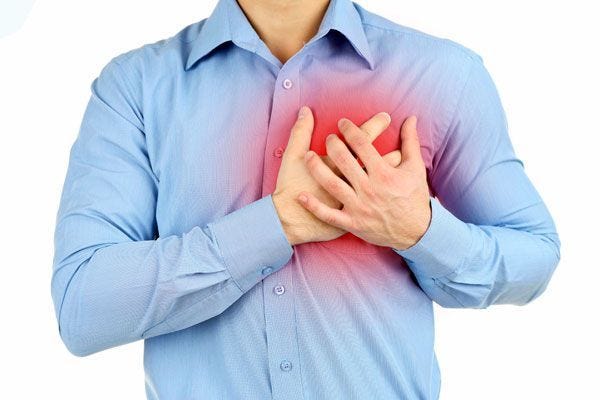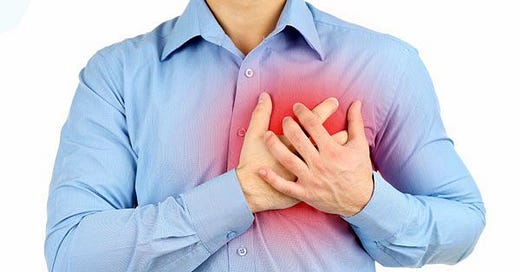A heartfelt story

Let me start with telling you just the story. Please bear with me, it will have some lessons in the end. It is just another one of those personal to political, particular to general stories that – properly formulated - I believe all of our stories are.
Last February, we went to visit a friend. She had a cold and asked if we could take her dog for a walk. We did, but I could not keep up. An overall pain started in my shoulders descending into my arms and only a little rest made it go away. Next day I was fine. I wrote it off as a fluke occurrence. A couple of week later we went skiing when I had the same symptoms walking to the slopes. I skied through the day, but two days later I was not able to walk 50 meters without the need to stop for a few minutes. As I later learned, I had typical angina symptoms.
Luckily, I managed to see a cardiologist within two days who got me through a stress test, then a nuclear stress test to confirm that indeed, I have angina. Then he gave me an option to participate in a study, in which, once approved, I would be randomly assigned to one of two groups: I would either go for angioplasty or closely watched drug treatment. The goal of the study, I was explained, is to compare the long-time survival rate of either approach. The criteria to participate is being in the “goldilocks zone,” sick enough to need treatment, but not too sick to need immediate intervention. Signing up meant to subject myself to random chance. It did not seem like a good bargain, but I couldn’t convince myself that the chance is truly random. Something was telling me that they must be short on people in the drug treatment group. Besides, a week after starting with a much-increased dosage of statins and three new drugs, I still did not feel noticeable improvement. I opted not to participate in the study and to undergo angioplasty.
The procedure took place in a week. Once finished, I was told that my front-left coronary artery was 95% blocked and I was shown the before and after videos of the flow. The ‘after’ flow clearly looked better. I also felt better.
I was put into a rehab regimen and exposed to all sort of information and health counselling. On diet and exercise, drugs and ideas of living with the condition. I was awestruck to see how little we actually know and understand, how the health-professionals were just preaching the prevailing health fashion of the day. The more I learned, the more I realized how superficial our understanding is, but let me get back to this point later.
The invention
The full-fledged appearance of the symptoms happened a week before we were supposed to leave for a two-months trip to Europe and the Middle-East. We had to cancel everything.
As I was explaining the reasons for the trip cancellation to my relatives, my aunt called my attention to a Hungarian biologist, the inventor of a procedure that is supposed to ‘fix’ cholesterol problems for good. A sort of vaccination against atherosclerosis. A medical procedure that FIXES the problem without surgical intervention and lifelong drug dependence. This obviously picked my interest and in the ensuing months I tried to find out as much as I could about the doctor, his invention and the procedure.
From the very beginning, I had to deal with two conflicting impulses. The arguments, the logic and the passion were very compelling, but they were heavily counterbalanced with the doubts about the credibility and the professionalism of the inventor, the procedure and the claims. Whatever he said made far more sense than what I heard from my family doctor, cardiologist or the different specialists in the rehab process. What gave me pause, was the delivery, the feeling that I am dealing with some sort of back alley medicine. I wanted to know more.
Here is his discovery in a nutshell (translated from a Hungarian medical site):
As a microbiologist, he concluded that while high levels of cholesterol may be correlated with atherosclerosis, they are not the cause of it. His discovery was an anti-cholesterol antibody. He found that these antibodies play an important role in the cholesterol metabolism. The antibody attaches itself to cholesterol molecules and if that does NOT happen, then LDL cholesterol will become un-absorbable by the body.
There are several recorded presentations on YouTube, only this one is English. The essence of his invention is to boost the production and functioning of these antibodies, which, in the process, also repairs the damaged walls of arteries.
There are several articles on line, only a few in English. This one is from a medical tourism site with a section describing the invention and the process in the form of a Q&A. The site is poorly designed and translated, but that should not be held against the procedure.
The Inventor and his problems
The inventor is a geek researcher and a proud Hungarian nationalist. He tried to get grants for his research without success. He was doing animal testing for years and at some point, he tried his invention on himself. He liked the results so much, that he started treating others. After treating hundreds of people, he was arrested based on an anonymous tip and charged with the crime of “unauthorized medical experimentation on humans”. After a two-year ordeal, he was found guilty and fined to the equivalent of a few thousand dollars. The procedure is still available, but it is not performed by him personally. The first of his speeches I listened to is titled “Miracles DO exist”
The procedure consists of nine sessions over a few weeks. I planned my trip to Hungary around it. In the first session my blood was taken, the blood serum separated and divided into nine doses. The first of those was mixed with the ‘miracle’ preparation, the rest frozen for the remaining sessions.
The experience was not particularly trust inspiring. It took place in the back room of a new-age-ish crystal and aroma therapy shop performed by a doctor who swung by the place after work for half an hour twice a week. She was not particularly helpful or communicative, as if she was embarrassed doing what she was doing.
It was the staff that answered some of my questions, the simple ones. I was told that the beneficial effects will take about a year to be fully realized. It will take that much time for the antibodies to repair the existing damage. The final result will be a much-improved HDL ratio but in the meantime, I can expect an elevated LDL count as the result of the plaques being slowly removed from the artery walls.
I am a little harsh and negative with the description of the experience to show you the foundation of my doubts. I did not get answers to many of my questions. When I asked another doctor (who also administers the procedure) about statins, he simply told me: “we do not believe in statins here”.
The only reasonable conversations I had was with a retired cardiologist, a family friend. He was cautiously optimistic about the procedure. He had a meeting with the inventor but couldn’t get much out of him. He wanted to gain a better understanding of the process which the inventor was not ready to divulge. Still, our friend could not deny the positive results he witnessed in people who underwent the procedure. He was much less positive about the prospects of the invention. The financial interest of the drug industry coupled with the paranoia of the inventor does not bode well for its prospects. When I asked him, what is most likely to happen, he said that the invention will probably die with the inventor.
Now everybody I know is asking me about the process and its effects on me. Not just because they care, but because half of the people I know are on statins as well. And I don’t have much to say. I feel better than I did in a long time and I believe it was the treatment that made it happen but I am not very big on feelings and beliefs. I want knowledge, understanding and evidence. Unfortunately, I do not have much of that either. Nobody asked me to provide data or appeared to care what I think. No support groups, no way to contact others who underwent the procedure. I don’t even know what to say to my doctors. I cannot properly document and explain what the treatment was, I cannot tell them what I could and should expect in the course of the year through which the full effects of the treatment are supposed to manifest themselves. Without that, my doctors can rightfully tell me that I am subjecting myself to faith-based medicine.
The question then is this: how is what they are offering to me any different? Let me answer that question in my next post. Hint: not very.
This post is part of a series about health care. You can find the rest here:
A heartfelt story - the personal aspects of the story Some heartfelt discoveries - what I learned once I looked into it A hearty bibliography - A seemingly unending list of references to those discoveries A heartfelt analysis - A critical exposé of the root causes of the problem My heartfelt wishes - A libertarian answer to the problems A heartfelt letter - A letter of frustration with a libertarian message Healthy thoughts - Final thoughts and a the personal aspects of the story


